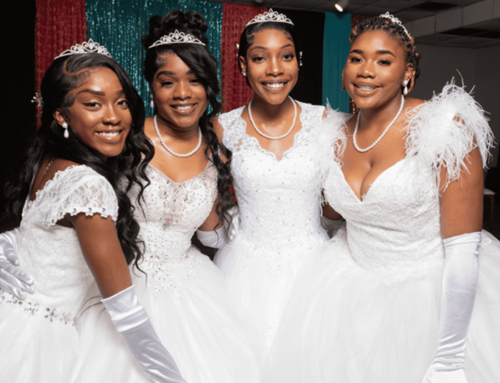By Mary Ann DeSantis
OUT+ABOUT: Swimming With Manatees (or Not)
Manatees will crowd into Florida’s warmer spring waters later this month, to ride out the winter weather. Seeing these gentle giants is a unique experience, and the only place in the world where you can legally swim with the endangered species is in the nearby Crystal River National Wildlife Refuge.
PHOTOS: Opening Photo “Morning Rendezvous” By Jeff Stamer/Firefallphotography.com + Tony + Mary Ann Desantis + Provided By Plantation On Crystal River
Early mornings on the water of the Crystal River National Wildlife Refuge are peaceful. Pontoon boats glide quietly along as the sun barely peaks through the cypress trees. Just enjoying the scenery is enough to start the day right, but anticipating a manatee encounter creates a restrained excitement for 15 swimmers who’ve donned wetsuits in the August heat. Captain Ross Files of the Plantation on Crystal River Adventure Center/Dive Shop predicts his passengers might just see one or two manatees on this cruise.
“In the summer, the average manatee tour will see one manatee,” says Files, our guide and boat captain who is a passionate advocate for protecting manatees. “In the winter, we can see as many as 250 in Kings Bay and another 150 in the adjoining Three Sisters Springs in just a couple of hours.”
As Files steers his boat into a canal near the Plantation on Crystal River, we spot her…a large pregnant manatee near the edge of the sea wall. We’ve been well-coached for this moment. After all, we’re about to enter her habitat.
“When you get into the water, you are entering the manatees’ home,” Files reminds us, “so practice good manatee etiquette.”
First and foremost, passive observation is the best way to interact with manatees. We are to float above them and keep our hands to ourselves. The captain tells us that if a manatee wants to be petted or touched, it will let us know—most likely with a gentle bump.
When Jeff Stamer was trying to photograph a sunrise at Three Sisters Springs, a manatee actually popped into the frame and gave the Longwood photographer a gentle nudge, apparently wanting a belly rub or possibly just to have its photo taken.
The first manatee on my swim was not so outgoing. She was probably only a few days away from delivering her baby, so we moved out of the canal and into Kings Bay in the national wildlife refuge, the only place in Florida where swimming with manatees is sanctioned and monitored.
Our group was luckier than most tourists on summer excursions. During our two-hour cruise, we saw three manatees. One apparently was lonely, because she spent a great deal of time frolicking with swimmers who had come from as far away as Germany and the Netherlands, just to see manatees.
PRACTICING MANATEE ETIQUETTE
The Florida Fish and Wildlife Conservation Commission and the U.S. Fish and Wildlife Service offer the following tips for proper interaction with manatees:
• Look, but don’t touch manatees. Also, don’t feed manatees. If manatees become accustomed to being around people, they can alter their behavior in the wild, thus becoming more susceptible to harm.
• Do not pursue or chase a manatee while swimming, snorkeling, diving, or operating a boat.
• Never poke, prod, or stab a manatee with your hands, feet, or any object.
• If a manatee avoids you, you should avoid it.
• Give manatees space to move. Don’t isolate or single out an individual manatee from its group, and don’t separate a cow and her calf.
• Keep hands and objects to yourself. Do not attempt to snag, hook, hold, grab, pinch, or ride a manatee.
• Avoid excessive noise and splashing if a manatee appears in your swimming area.
• Use snorkel gear when attempting to watch manatees. The sound of bubbles from SCUBA gear may cause manatees to leave the area.
• Float at the surface of the water to passively observe the manatees.
• Do not enter areas designated as “NO ENTRY-MANATEE REFUGE”
The Crystal River National Wildlife Refuge is indeed known worldwide for having the largest manatee population (more than 1,000 wintered there last year). It was founded in 1983, specifically to protect the endangered Florida Manatee, a subspecies of the West Indian Manatee. This unique wildlife refuge—with more than 25,000 surface acres of pristine lakes, rivers, springs, and state parks—is the last unspoiled and undeveloped spring habitat in Kings Bay, which forms the headwaters of the Crystal River.
“The manatees love it here because of the 80-to-90 springs, which stay a constant temperature,” explains Brandie Wooten, operations manager for River Ventures, a family owned-and-operated manatee swim tour company in Crystal River. “The aquifer-fed springs provide a critical habitat for the manatee populations. The bay is shallow, which they also love because they can feel the sunshine.”
Manatees are migratory and often return to the same places every winter with their offspring. They can live to be 50-to-60 years old so it’s not unusual to see several generations from the same manatee family.
Wooten, who is active with the Manatee Eco Tourism Association, describes “Vee,” a manatee who returns annually with at least four of her offspring and grandchildren. “Manatees tend to be very good mothers,” she adds.
Indeed that was the case in nearby Ellie Schiller Homosassa Springs State Wildlife Park, where a severely injured manatee was “adopted” by the park’s resident manatees.
 “Our girls are very maternal,” says Homosassa Springs park ranger Ed Spector. “They helped the injured manatee surface for air and helped her feed because she couldn’t do it herself.”
“Our girls are very maternal,” says Homosassa Springs park ranger Ed Spector. “They helped the injured manatee surface for air and helped her feed because she couldn’t do it herself.”
If donning a wetsuit (required for buoyancy) and snorkel is not your cup of tea, you can still get an up-close and personal look at manatees in Homosassa Springs any time of year without getting wet. Four manatees live there permanently because they are unable to return to the wild. At feeding time, they make themselves available for photos near the boardwalk and at the floating underwater observatory.
And just like Kings Bay, Three Sisters Springs, and other springs, Homosassa Springs is home to wintering manatees by the hundreds, from November to March. The park also offers daily lectures about manatees to increase appreciation and awareness about this still-endangered species protected by the Endangered Species Act and Marine Mammal Protection Act.
TRIP TIP
Currently, about a dozen companies in the Crystal River and Homosassa Springs area offer licensed swim-with-the-manatee tours. The Plantation on Crystal River, my recent base of operations, offers manatee swim “packages” with overnight accommodations so guests can conveniently enjoy the early morning excursions (the best time to view manatees) leaving from the on-site dive shop. [www.plantationoncrystalriver.com]
MANATEE VIEWING ELSEWHERE IN FLORIDA
While the Nature Coast offers the only place to swim with manatees, there are numerous other locations around Florida where you can get an up close and personal view of these gentle giants.
Blue Spring State Park in Volusia County offers boardwalks near the water where you can view manatees as they bask just beneath the surface. More than 100 million gallons of water pour into this first magnitude spring daily, and the manatees swim miles up the St. Johns River to spend the winter there.
The Manatee Viewing Center in Apollo Beach (near Tampa) offers walkways over 50 acres of a federally designated sanctuary for manatees.
On Florida’s east coast, the Merritt Island National Wildlife Refuge in Titusville gets its share of manatees that winter in the Haulover Canal, where a viewing platform is located on the northeast side of the canal.








































